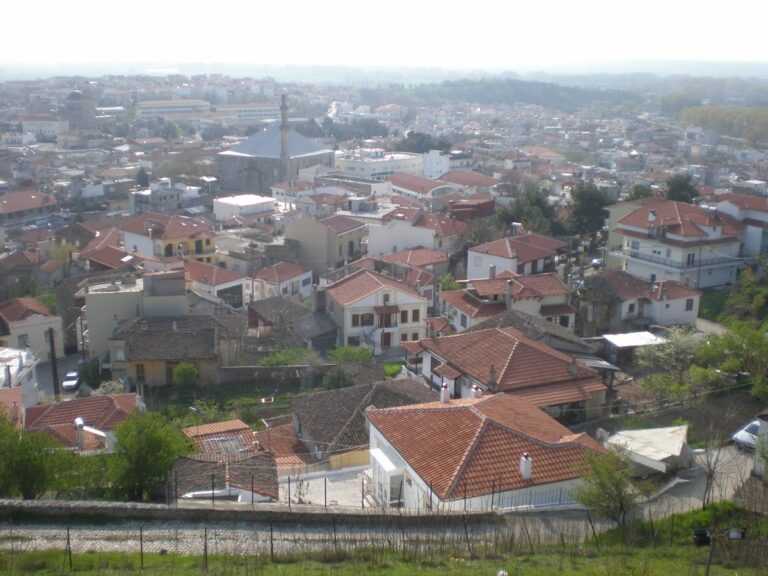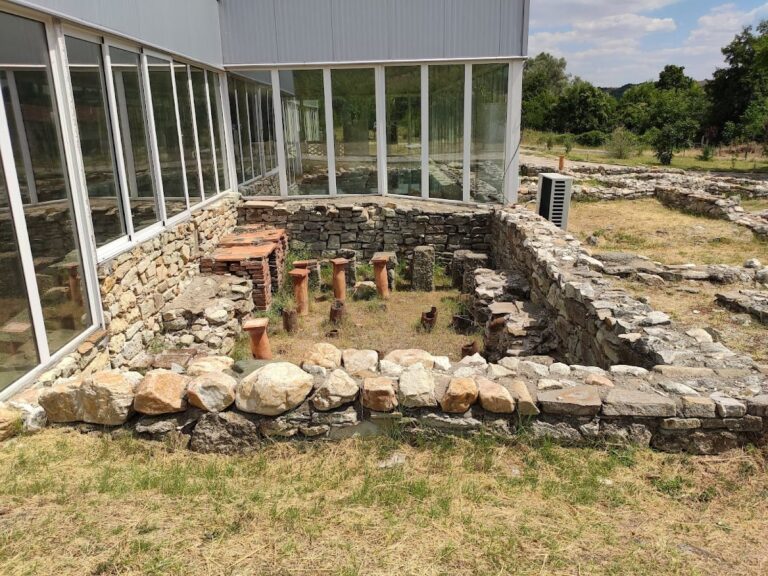Traianoupoli: Thermal Baths and Ancient City in Northeastern Greece
Visitor Information
Google Rating: 3.7
Popularity: Very Low
Google Maps: View on Google Maps
Official Website: alexpolis.gr
Country: Greece
Civilization: Byzantine, Ottoman, Roman
Remains: Sanitation
History
The thermal baths of Traianoupoli are located near the modern village of Loutros in northeastern Greece. The site was originally established in the early 2nd century AD by Roman Emperor Trajan. He founded the city of Traianoupoli on the remains of an ancient Thracian settlement, aiming to develop the region of Thrace through urbanization. The city was designed following the Greek polis model and incorporated local Thracian populations.
Traianoupoli rose to prominence during the late Roman period, especially under Emperor Diocletian in the late 3rd and early 4th centuries AD. At that time, it became the capital of the Roman province of Rhodope. The city was fortified with walls and expanded along the southern slope of the Agios Georgios hill, extending toward the nearby Tsai stream, where the thermal springs are found. Its location was strategic, situated on the Via Egnatia, a major Roman road connecting the eastern and western parts of the empire.
From the early Christian era, Traianoupoli served as an important ecclesiastical center. It became a bishopric before the Diocletian persecution around 305 AD and later developed into a metropolitan see. For about twelve centuries, it oversaw several subordinate bishoprics and administered the entire province of Rhodope.
The city’s fortunes declined sharply after the Fourth Crusade in 1204, when it was granted to a Frankish lord. It suffered repeated raids by Bulgarians in 1206 and Turks in 1329. During the mid-14th century, Traianoupoli was caught in civil wars and was eventually abandoned. Contemporary accounts describe it as ruined by that time.
Under Ottoman rule, beginning in the mid-14th century, a dervish lodge (tekke) of the Bektashi order was established on the Agios Georgios hill near the thermal springs. Known as Isiklar or Nefes Baba, this religious site included a sacred spring. Today, only ruins and the spring remain from this period.
Archaeological investigations have been limited but have revealed tombs, buildings, a sundial, and coins, including one depicting the river god of the Evros. Since 1964, the area within the ancient city walls and the adjacent acropolis hill has been protected as an archaeological site.
Remains
The site of Traianoupoli’s thermal baths includes several well-preserved structures dating mainly from the 4th century AD. The central feature is the “Hana” baths, an arched rectangular building that also served as a guesthouse. This structure reflects late Roman construction techniques and was built to utilize the nearby hot springs.
Adjacent to the baths are vaulted buildings and the remains of a church, indicating the complex’s multifunctional use. Nearby lie the ruins of the 14th-century Muslim tekke of Isiklar, established during Ottoman times on the Agios Georgios hill.
The old baths include two domed buildings from the 16th century, each containing a water tank and locker rooms. These later structures show continued use and adaptation of the thermal facilities over centuries.
The thermal springs themselves produce water at temperatures of 51 to 52 degrees Celsius. The water is chemically rich, containing chloride, sodium, calcium, potassium, boron, and hydrogen sulfide, with slight radioactivity. This composition has made the springs suitable for therapeutic use since antiquity.
Today, the thermal complex includes modern hydrotherapy facilities with bathtubs and jacuzzi tubs heated by the spring water. The buildings are designed to maintain a warm and healthy environment by using the natural heat of the water.
Most archaeological finds from the site, including tombs, coins, and sundials, are preserved in the Archaeological Museum of Komotini. The ruins and thermal springs lie close to the national road leading toward the Greek-Turkish border, near the village of Loutros.

